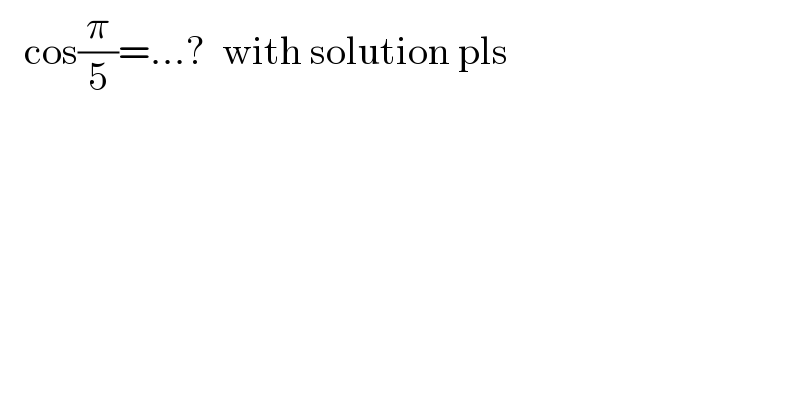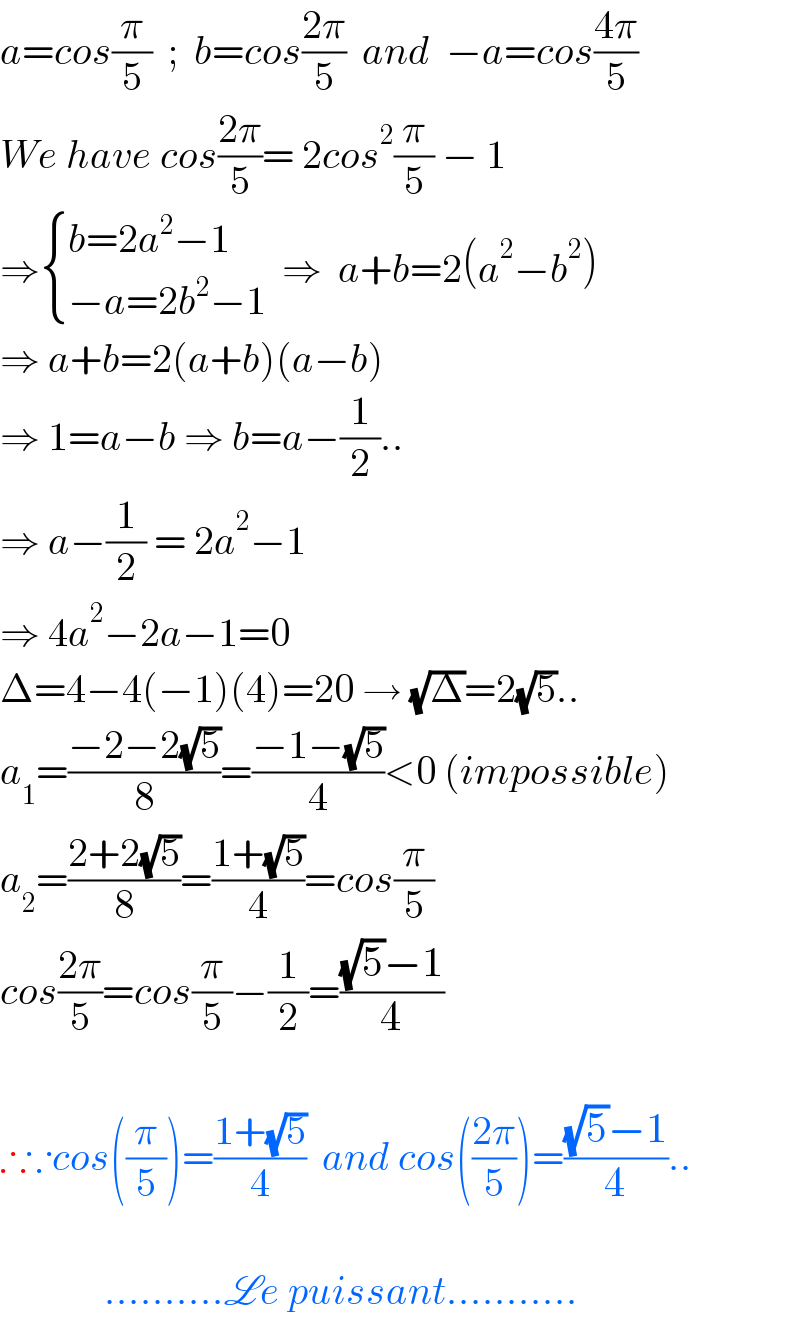
Question and Answers Forum
Question Number 156126 by VIDDD last updated on 08/Oct/21

Commented by cortano last updated on 08/Oct/21

Answered by puissant last updated on 08/Oct/21

Commented by VIDDD last updated on 09/Oct/21

| ||
Question and Answers Forum | ||
Question Number 156126 by VIDDD last updated on 08/Oct/21 | ||
 | ||
Commented by cortano last updated on 08/Oct/21 | ||
 | ||
Answered by puissant last updated on 08/Oct/21 | ||
 | ||
| ||
Commented by VIDDD last updated on 09/Oct/21 | ||
 | ||